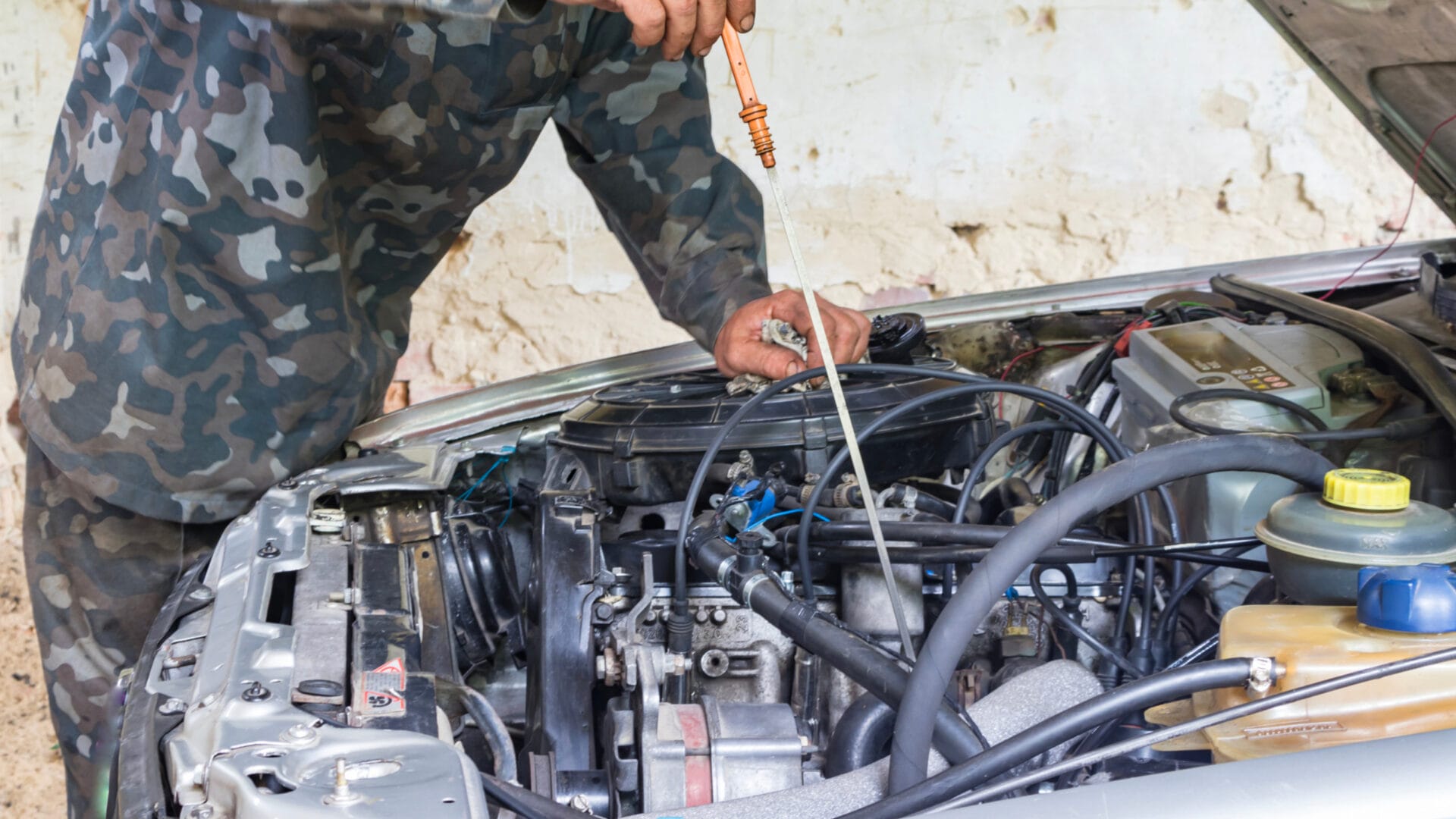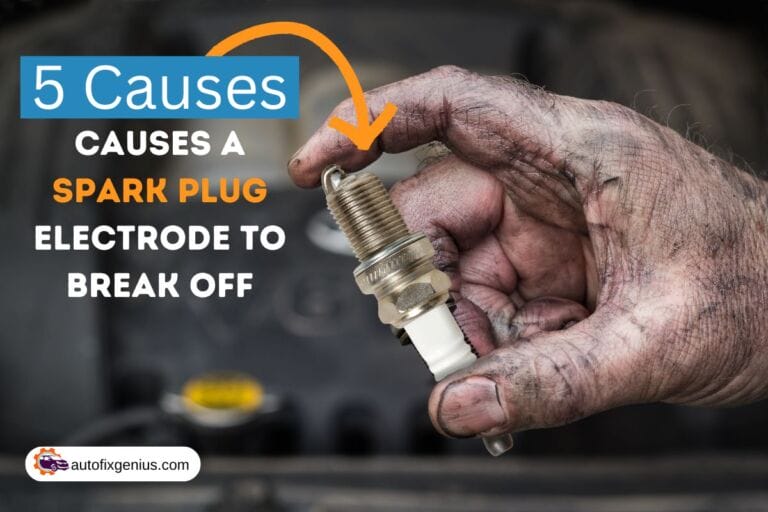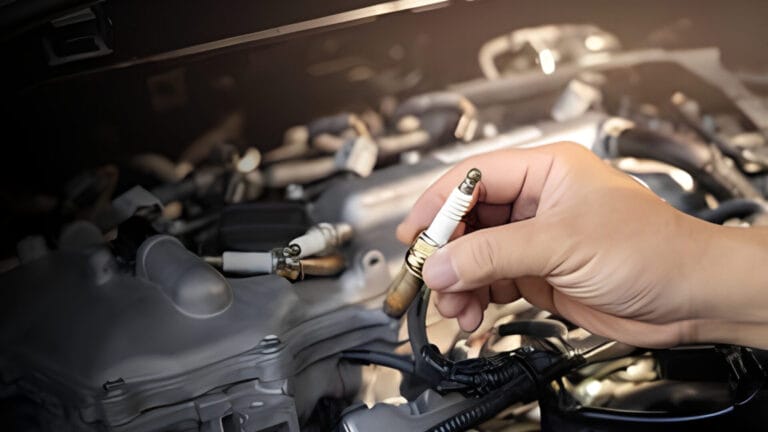Why Is My Dipstick Covered In Oil
Have you ever noticed your oil dipstick throwing an oil-themed party under the hood?
Don’t worry; you’re not alone in this oily adventure. This is a common problem that many car owners face. But why does it happen, and what can you do about it?
Today, I am here, your friendly automotive confidant, to help you tackle the age-old question, Why is my dipstick covered in oil?
In this blog, we will cover everything you need to know about the relationship between your dipstick and oil, key reasons why your dipstick may be covered in oil, critical issues to consider, and proactive measures to prevent oil overload on your dipstick and solutions.
So, if you’re struggling with a dipstick covered in oil, keep reading for all the answers you need.
Understanding the Dipstick and Oil Relationship
Engine performance relies on the oil’s ability to lubricate moving parts and regulate temperature within the engine. Maintaining a proper oil level is crucial for smooth operation and to prevent metal-to-metal contact. Ensuring sufficient oil levels is the only way to guarantee the longevity of your car’s engine. Here, the dipstick comes into play.

What is a Dipstick
A dipstick is a small but mighty tool that plays a vital role in keeping our engines running smoothly. It’s a long, slender rod you’ll find under the hood of your car. Its main job is to measure fluid levels in essential components like the engine oil level or transmission fluid level and help determine the need for an oil change.
The Role Of Dipstick
A dipstick’s role is to accurately measure the fluid level, allowing users to monitor engine lubrication, ensure sufficient oil, and prevent serious damage. Simply pulling out the dipstick and wiping it before reinserting it, you can get an accurate reading of how much fluid is in there. This helps ensure you’re not running low on oil or other essential fluids, which could lead to some serious engine trouble.
Why Your Dipstick is Covered in Oil- Common Causes & Solution Explained
Whether checking the oil level in your car or measuring the coolant level in your generator, a dipstick is your trusty companion. When the dipstick is covered in oil, it’s really a frustrating situation. Simple issues like overfilling the oil, oil leak, leaky seals, and a misbehaving PCV valve to more serious problems like a blown head gasket can cause this problem.

Understanding these causes can help you prevent dipsticks covered in oil and any further issues with your vehicle in the future. Let’s know the possible culprits behind this oily mess and their solutions.
Engine Running Without Turning Off
Running your car’s engine before using the dipstick can cause oil splatter, leading to a oil covered dipstick. Failing to let the engine cool down before checking the oil level can also result in oil on the dipstick. Remember, allowing the engine to cool down is essential to avoid oil spreading and covering the dipstick. This ensures accurate readings without the interference of oil splatter.
Solution
Oil is circulating when the engine is running, and the dipstick won’t give you an accurate measure. Park on level ground, power down, and wait a minute for the oil to settle. Pull out the dipstick, wipe it clean, reinsert it, and then check. It’s a quick pause that guarantees precision.
The Danger Of Overfilling Engine Oil
When you overfill, it’s like inviting too many guests to the party – your engine won’t appreciate the overcrowding. Overfilling an engine can cause oil to splatter, and this excess oil can spill into the oil pan, resulting in a dipstick covered in oil and inaccurate measurements. It’s vital to avoid adding excessive oil to the engine to prevent these issues in the future. Overheating of the engine can cause sludge, leading to a covered dipstick.
Solution
Imagine your engine as a coffee cup – too much, and it spills. Stick to the recommended oil levels during changes, providing the perfect balance. However, if you’ve accidentally overfilled your engine, let it rest on level surface until the excess oil settles. Then, slowly remove the dipstick, wipe it clean, and reinsert it for a fresh reading. If it still shows an overfill motor oil, drain the old oil through the drain plug.
Overheated Engine
Excessive heat can break down the oil’s molecular structure, leading to oxidation and a thicker, sludgier consistency. This degraded oil may then cling to engine components, including the dipstick, creating a messy coating. Overheating can also result in gasket and seal failure, allowing oil to leak and reach the dipstick.
Solution
Turn off the engine and let it cool. Then open the oil filler cap and check the coolant level – if it is low, top it up once the engine cools. The radiator cools down your engine, preventing overheating and turning your dipstick into a mess.
The Effect Of A Faulty Head Gasket
A faulty head gasket can cause the dipstick tube to be covered in oil by allowing the mixing of fluids within the engine. When the valve cover fails, the coolant can intermingle and find its way into the oil pan. This increases overall oil volume, causing excess oil to splash and coat engine components, including the dipstick.
Solution
The head gasket, a humble yet crucial engine component, seals in the goodness and keeps the fluids in their lanes. When it starts acting up, swiftly seek professional help to address the faulty head gasket and do what the expert asks for.
Complications From Contaminated Oil With Dirt
Contaminated oil mixed with dirt can lead to a dipstick covered in oil, showing oil splatter or being completely covered during measurement. This can result in adverse effects on the car’s engine, necessitating proactive measures to prevent such complications. Regular maintenance and correct oil measurement are crucial for preventing cars engine damage in the future.
Solution
Regular oil changes using a quality oil filter help flush out contaminants, keeping your dip stick tube clean and your engine happy! The fuel acts like a liquid superhero, sweeping away dirt and debris and keeping your dipstick clean.
PCV Valve Malfunction
A malfunctioning Positive Crankcase Ventilation (PCV) valve can contribute to a dipstick being covered in oil. It is responsible for maintaining balanced pressure in the engine and regulating the flow of gases. When it malfunctions, excess pressure can build up within the crankcase, leading to the expulsion of oil vapors. These vapors may then travel through the engine and reach the dipstick, coating it with oil.
Solution
When your PCV (Positive Crankcase Ventilation) valve misbehaves, it’s like giving your engine compartment a breath of fresh air. It regulates pressure and ensures proper ventilation. Imagine it as your engine’s lungs. When it malfunctions, replace it swiftly.
Hot Engine Measuring
Measuring oil level with a hot engine can cause oil splatter and make it stick to the dipstick. So, when the engine operating temp is high, avoid measuring; measure on a cold engine. This ensures accurate readings without the interference of oil splatter.
Solution
For accurate dipstick readings, cool your engine before measuring. Park on level ground, turn off the engine and let it sit for a few minutes. This pause allows the oil to settle, ensuring a precise dipstick reading.
Is It Normal For The Dipstick To Be Covered In Oil?
Yes, it’s normal for the dipstick to be covered in oil when you pull it out for a reading. The purpose of the dipstick is to measure the oil level in the engine, and it will naturally be coated with oil when inserted.

What’s crucial is the oil level on the dipstick when you check it. It should fall within the recommended range indicated on the dipstick. If the oil level is too high or too low, this can lead to lubrication, combustion, and overheating issues.
Read your vehicle’s manual to find the proper oil level, and consult a mechanic if the dipstick is constantly soaked with oil.
FAQ
What Does It Mean If Oil Is All Over The Dipstick?
If the entire dipstick is covered in oil, it could indicate potential issues such as overfilling, a leaking gasket, or other engine problems. It’s essential to observe the appearance and consistency of the oil. If it appears milky or contains debris, it might suggest coolant contamination or internal engine issues. You should check for leaks and ensure proper oil levels if excessive oil is observed on the dipstick. Consult a professional if necessary to diagnose and address any underlying problems.
Should Oil Be At The Top Of Dipstick?
No, it shouldn’t be. The oil level should fall within the designated range on the dipstick, not exceeding the maximum limit. Always refer to your vehicle’s manual for precise guidelines on maintaining the oil level within the recommended boundaries for optimal engine health.
Can A Dipstick Be Wrong?
Yes, it can. Factors like engine running, recent oil changes, or an uneven surface may affect accuracy. Follow the owner’s manual guidelines, and if in doubt, consult a professional for precise oil level checks.
Can I Drive With Low Oil On Dipstick?
You can, but you shouldn’t. Low oil means less lubrication for your engine, potentially causing serious damage. Check your dipstick regularly, and if it’s low, top up with the recommended oil ASAP.
What Colour Should Oil Be On Dipstick?
New oil is like golden amber, while older oil has a darker hue. So, if it’s a clear caramel or tan color on the dipstick, you’re in the golden zone. Keep an eye on changes – it’s your engine’s way of whispering its needs. And if it’s darker, it’s time to change the oil.
How Much Is Oerfilled On A Dipstick?
Generally, if the oil level exceeds the maximum recommended level on the dipstick and is less than 1/32 of an inch above the full line, it’s within acceptable limits. But it can change depending on the vehicle model and other specifications. So, for precise measurements, you should follow the manufacturer’s recommendations.
Conclusion
In conclusion, a dipstick covered in oil often signals underlying issues like oil leaks, faulty head gaskets, or overfilling. Correctly measuring and maintaining the oil level is crucial to prevent such buildup.
Regular checks for leaks and a clean dipstick contribute to a smoothly functioning vehicle. If persistent issues arise, it’s advisable to consult a professional mechanic for accurate diagnosis and resolution.






